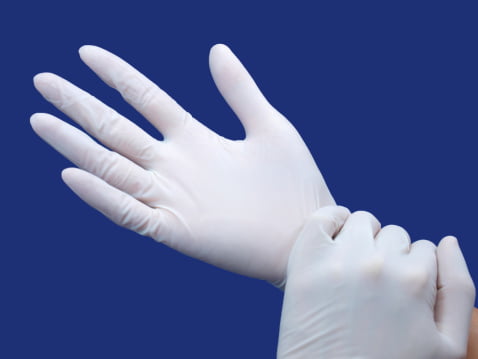1883 will be remembered in history as the year that Tsar Alexander III was crowned in Russia but, there was also a lesser known invention. The latex glove first made its appearance in this year but it wasn’t until a decade later before it became an accepted part of surgical procedures.
In the later 19th Century, our understanding of what caused infections was far more limited and simplistic than our understanding today. Many surgeons and doctors still believed that infections were caused by miasmas – bad smells that carried unknown and unidentified ‘germs’.
Slowly the link was made that bacteria was introduced into wounds from surfaces and instruments, including the hands of the surgeon. Thus, with the 20th Century on the doorstep, the latex glove became as routine to an operation as anaesthetic.
A pressing issue
There was, however, a pressing issue that needed solving. Surgeons complained at the difficulty of squeezing the rubber glove on to their hands. Naturally close fitting to allow for dexterity, the latex glove stuck to the skin, making it difficult to remove without causing discomfort, or causing it to rip.
The industry responded by combining talc and a lycopodium spores but, on discovering these mould spores were toxic to humans, manufacturers stuck to talc-only-lubrication. This innovation lasted 40 years until it became apparent that this talc was causing issues for the patient and their recovery, and during the Second World War talc in the gloves was replaced with edible starch. Absorbent, it was also considered to be a non-irritant and has remained the lubricant in latex gloves ever since, with the process now being refined so that each glove is liberally coated.
A new challenge
However, as we entered the 21st Century, there was a new issue – the growing number of people allergic to latex. Opinions vary as to why this is the case, with many scientists believing that the number of objects and products that contain latex to be the underlying cause. This allergic reaction seems to be made worse by the powder in the gloves too and thus, the vast majority of latex gloves are no longer powdered. Many of these surgical grade and examination gloves are now coated in a chlorination process, making the surface of the glove less tacky.
The latex glove continues to play a part on all walks of life, from the operating theatre to the tattoo parlour, and continues to evolve even today!
The latex glove continues to play a part on all walks of life, from the operating theatre to the tattoo parlour, and continues to evolve even today please see our full range of latex gloves here on our site



Add comment